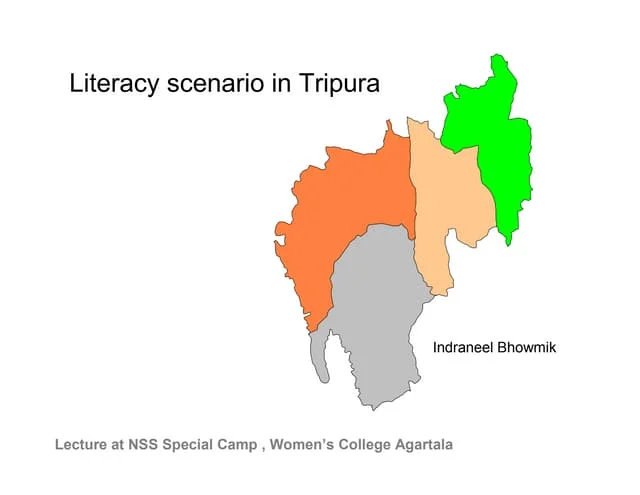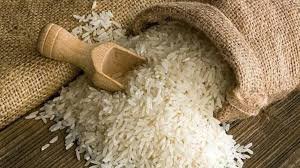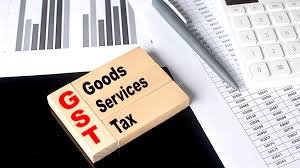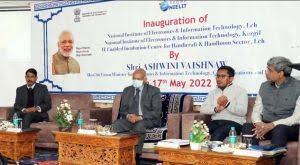District of Tripura with the Lowest Literacy Rate
Tripura, known for its rich cultural heritage and biodiversity, also faces challenges in terms of literacy rates. According to the latest statistics, the district of Dhalai has the lowest literacy rate in the state of Tripura. Despite the state boasting an overall literacy rate of around 87.75%, Dhalai district lags significantly behind. This disparity in literacy rates across districts raises concerns about regional educational inequalities and the need for targeted government interventions to uplift underperforming areas.
Socioeconomic Challenges in Dhalai
Dhalai is a predominantly rural district with a significant tribal population. One of the primary reasons for the lower literacy rate in this region is its geographical remoteness, which limits access to educational resources. A lack of adequate schools, teachers, and educational infrastructure, coupled with poverty, has exacerbated the problem. In addition, early school dropouts and child labor contribute significantly to the low literacy rate, as children often work to supplement their family income.
Government Efforts and Initiatives
To address this issue, the government of Tripura has initiated various schemes, including Sarva Shiksha Abhiyan and Mid-Day Meal Scheme, to improve education in underdeveloped regions like Dhalai. The state government has also encouraged the involvement of NGOs and local communities in promoting awareness about the importance of education. These efforts have begun to yield some results, but much work remains to be done to bridge the literacy gap in the district.
The Role of Technology in Bridging the Gap
Technology has the potential to revolutionize education in remote areas like Dhalai. With the advent of digital classrooms, mobile learning apps, and e-learning platforms, students in underprivileged regions now have better access to quality education. Government efforts to increase digital literacy and infrastructure are vital to ensuring that technology reaches every corner of the state.

Why This News is Important
Highlighting Regional Disparities in Education
The fact that Dhalai district has the lowest literacy rate in Tripura draws attention to the pressing issue of regional educational inequalities. This is important for government exam aspirants, especially those preparing for civil services, as they are expected to understand and address socioeconomic issues in their roles as administrators.
The Importance of Educational Policies
Understanding the literacy rate of a region is essential for framing effective educational policies. This news sheds light on the success and challenges of existing schemes, such as Sarva Shiksha Abhiyan and Mid-Day Meal Scheme, which are crucial for exams like UPSC, banking, and teaching positions.
Impact on Tribal and Rural Development
This news also focuses on the socioeconomic impact of low literacy rates on tribal populations and rural development. Knowing how literacy affects economic growth and societal progress is a vital part of the syllabus for various competitive exams.
Historical Context
Tripura has always had a high literacy rate compared to other northeastern states. However, the district-level disparity has been a longstanding issue. Historically, the districts in the state have seen uneven development, primarily due to their geographic and demographic differences. The state’s literacy campaign began in the early 1990s, significantly raising literacy rates but failing to eliminate regional disparities. The introduction of various educational policies, such as Right to Education (RTE) and Samagra Shiksha Abhiyan, has been a critical part of Tripura’s literacy journey. These policies have aimed at achieving universal access to education, but districts like Dhalai still face unique challenges due to their remote location and high poverty levels.
Key Takeaways from “District of Tripura with the Lowest Literacy Rate”
| Sr. No | Key Takeaway |
|---|---|
| 1 | Dhalai district has the lowest literacy rate in Tripura. |
| 2 | Socioeconomic challenges, including poverty and remoteness, contribute to the low literacy rate. |
| 3 | Government schemes like Sarva Shiksha Abhiyan aim to improve educational infrastructure. |
| 4 | Technology, such as digital classrooms, can help bridge the literacy gap. |
| 5 | Understanding regional literacy disparities is crucial for aspirants preparing for government exams. |
Important FAQs for Students from this News
1. What is the literacy rate of Dhalai district in Tripura?
Dhalai district has the lowest literacy rate in Tripura, significantly below the state’s average literacy rate of 87.75%.
2. What are the main challenges affecting literacy rates in Dhalai?
The primary challenges include geographical remoteness, inadequate educational infrastructure, poverty, and high dropout rates due to child labor.
3. What government initiatives are in place to improve literacy in Dhalai?
Government initiatives include the Sarva Shiksha Abhiyan and the Mid-Day Meal Scheme, which aim to enhance educational infrastructure and encourage school attendance.
4. How does technology contribute to addressing literacy issues in Dhalai?
Technology helps by providing digital classrooms, e-learning platforms, and mobile learning apps, which improve access to quality education in remote areas.
5. Why is it important for government exam aspirants to know about literacy rates in different districts?
Understanding regional disparities in literacy rates is crucial for framing effective policies and addressing socioeconomic issues, which is a significant aspect of various competitive exams.
Some Important Current Affairs Links




![First Woman to Climb Mount Everest: [Name]’s Historic Achievement First woman to summit Everest](https://edunovations.com/currentaffairs/wp-content/uploads/2024/09/First-woman-to-summit-Everest-1.jpeg)









